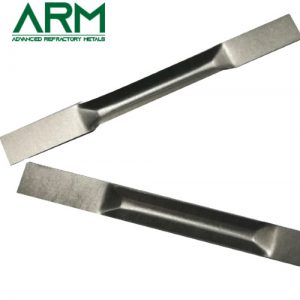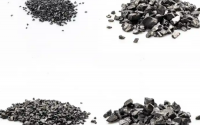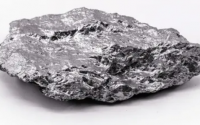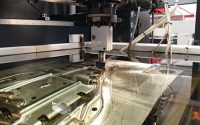How Molybdenum Boats Are Used in High-Temperature Processes
Introduction
Molybdenum boats are indispensable tools in various high-temperature processes due to their high melting points, excellent thermal and electrical conductivity, and outstanding resistance to corrosion and wear. This article explores the diverse applications of Mo boats in high-temperature processes, highlighting their critical roles across multiple industries.

Properties of Molybdenum
Molybdenum is characterized by several properties that make it suitable for high-temperature applications:
- High Melting Point: Molybdenum has a melting point of 2,623°C (4,753°F), allowing it to maintain structural integrity at elevated temperatures.
- Thermal Conductivity: Molybdenum boasts excellent thermal conductivity, measured at approximately 138 W/m·K at 300 K. Excellent thermal conductivity ensures efficient heat distribution, minimizing thermal gradients and preventing structural failure.
- Corrosion Resistance: Molybdenum exhibits strong resistance to corrosion by most acids and alkalis, ensuring longevity in harsh environments.
- Mechanical Strength: Molybdenum maintains high strength and toughness at both room and elevated temperatures, with a tensile strength of about 690 MPa at room temperature.
Key Applications
1. Vacuum Evaporation and Deposition
Molybdenum boats are widely used in vacuum evaporation and deposition processes, where materials are heated to a high temperature until they vaporize and then condense onto a substrate to form thin films. The high melting point and thermal stability of molybdenum ensure that the boats do not deform or contaminate the material being deposited. This application is crucial in the production of semiconductors, solar cells, and optical coatings.
2. Sintering and Melting Metals
In powder metallurgy, molybdenum boats are employed for sintering and melting metals. These processes involve heating powdered materials below their melting points until they bond together or completely melt to form a solid piece. Molybdenum’s resistance to high temperatures and its minimal reaction with most metals make it ideal for these applications. This is particularly important in producing high-performance alloys and precision components.
3. Chemical Vapor Deposition (CVD)
Chemical vapor deposition is a process used to produce high-purity, high-performance solid materials. Molybdenum boats serve as containers for the precursor materials that are vaporized and then react on a substrate to form thin films or coatings. The stability and inertness of molybdenum ensure that the boats do not react with the precursors, maintaining the purity of the deposited films. CVD is widely used in the semiconductor industry, for coating tools, and in the production of various nanomaterials.
4. Annealing and Heat Treatment
Annealing involves heating a material to a specific temperature and then slowly cooling it to remove internal stresses and improve ductility. Molybdenum boats are used to hold and transport materials through the annealing furnace. Their high-temperature resistance ensures that they can endure prolonged exposure to heat without degradation, making them essential in the heat treatment of metals and alloys.
5. Crystal Growth
In the production of single crystals, such as silicon or sapphire for semiconductor and optical applications, molybdenum boats are used to contain the raw materials during the crystal growth process. The boats’ ability to withstand high temperatures without contamination is critical for producing high-purity crystals with minimal defects.
6. Laboratory Applications
Molybdenum boats are also used in various laboratory applications requiring high-temperature conditions, such as material research and thermal analysis. Their durability and resistance to chemical attack make them reliable containers for experiments involving corrosive substances and extreme heat.
Advantages and Challenges
Mo boats stand out for other advantages:
- Durability: Molybdenum boats withstand repeated heating cycles without degradation, ensuring long-term use.
- Purity: High purity minimizes contamination of processed materials.
- Versatility: Customizable in various shapes and sizes for specific applications.
Yet, there also exist challenges and limitations.
- Cost: Molybdenum is expensive, increasing equipment costs.
- Manufacturing Complexity: Requires advanced fabrication techniques and stringent quality control, leading to higher production costs and longer lead times.
Conclusion
Molybdenum boats play a vital role in numerous high-temperature processes across various industries for their high melting points, thermal conductivity, and corrosion resistance. They have become indispensable in vacuum evaporation, sintering, chemical vapor deposition, annealing, crystal growth, and laboratory applications. Despite the challenges associated with cost and manufacturing, the advantages they offer make them a valuable asset in ensuring the efficiency, reliability, and quality of high-temperature processes.
As technology advances, the demand for high-performance materials like molybdenum boats is expected to grow, further solidifying their importance in modern industry. For more information, please check Advanced Refractory Metals (ARM).



